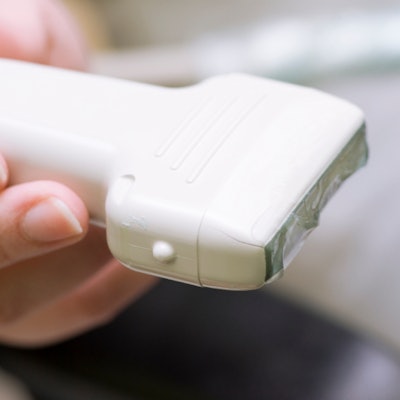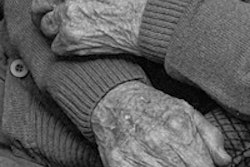
Using a portable, handheld ultrasound device at the bedside for elderly patients works just as well as a regular, high-end ultrasound system for diagnosing disease and therefore clarifying treatment options, according to a German study published on 26 April in the European Journal of Ultrasound.
The results suggest a way clinicians could have more flexibility when working with geriatric patients, who often present with restricted mobility, wrote a team led by Dr. Eckhart Fröhlich of the University of Tübingen in Germany.
"All patients had limited mobility and had to be brought to the ultrasound lab sitting in a wheelchair," the group noted. "In such a setting, the bedside handheld ultrasound device is able to save a lot of time (transport, nurses, etc.)."
Flexible technology
Ultrasound is used as a primary imaging method around the world for a variety of indications, but research regarding its diagnostic impact with geriatric patients is lacking, the group wrote. So Fröhlich and colleagues evaluated the performance of point-of-care (POC) ultrasound in elderly patients using handheld mobile ultrasound at bedside in comparison with a high-end ultrasound system as the gold standard.
The study included 112 elderly patients who underwent two ultrasound exams between August 2017 and March 2018: one using the portable, handheld device (42% at bedside and 58% in the ultrasound suite) and another using the high-end device (in the ultrasound suite). Mean patient age was 84. The time needed for both ultrasound exams ranged between 20 and 45 minutes, with the handheld ultrasound exam slightly shorter (eight to 18 minutes) than the high-end ultrasound exam (12 to 27 minutes).
The main indications for ultrasound included the following:
- Labored breathing (44.6%)
- Fall (24.1%)
- Fever (21.4%)
- Abdominal pain (17.9%)
- Weight loss (17%)
- Swollen leg (13.4%)
- Elevated liver function tests (13.4%)
- Suspected urinary retention (11.6%)
- Abdominal distention (7.1%)
- Rapid heart rate (7.1%)
The most frequent diagnoses were cystic lesions (32.1%), hepatic vein congestion (19.3%), and ascites (13.6%).
Two geriatricians performed the exams, using common bile duct and B-line measurements to compare the performance of the two types of ultrasound. The examiners rated image quality as good, mediocre, and poor.
Fröhlich's group found that image quality ratings between both devices was identical in 74.1% of patients, and the B-line resolution did not differ significantly (p = 0.089). The common bile duct was visualized in 78.8% of patients with the high-end ultrasound device, compared with 66.3% of patients with the handheld device. Finally, the team found that the handheld ultrasound device's overall sensitivity was 89.5% and its overall specificity was 99.6%.
"In most cases, the handheld ultrasound device allows sufficiently accurate yes/no diagnoses at the bedside with clarification of leading symptoms for early clinical decisions," the researchers wrote.
Another POC tool
The study is the first to assess the value of the handheld ultrasound device in a geriatric setting where point-of-care ultrasound seems especially valuable, the group wrote. Its aim was not to suggest that point-of-care, handheld ultrasound should replace high-end ultrasound; point-of-care ultrasound does have limitations and shouldn't be used to clarify complex oncological issues in geriatric patients, the team noted.
However, the technology does show promise for offering an imaging alternative in this particular patient group and situation, according Fröhlich and colleagues.
"The mobile handheld ultrasound device is a diagnostic tool well-suited for geriatric patients, which can easily and rapidly be used at beside to extend the physical examination and provide important additional diagnostic and therapeutic information," the researchers concluded.



















